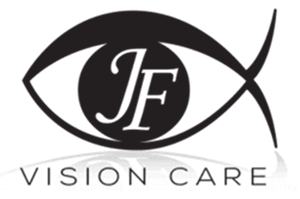Imagine driving down the highway with a very dusty windshield. Sounds challenging, right? For those who live with cataracts, their view of the world is often something comparable to looking through a dirty window.
Cataracts are a common eye condition that affects millions of people worldwide, particularly as they age. In this blog we’ll be diving into a ‘what to know’ guide of cataracts, including what they are, common causes, symptoms, and risk factors. Understanding these aspects can help you recognize the signs early and seek appropriate treatment to maintain your or a loved one’s vision and quality of life.
If you or a loved one is living with cataracts or is at risk of developing them, contact us at Judson Family Vision Care to see how we can help.
What are Cataracts?
Cataracts occur when there’s a clouding of the eye’s lens. This lens is similar to a camera lens, which focuses light onto the retina at the back of the eye, where an image is recorded. It also adjusts the eye’s focus, letting us see things clearly up close and far away. This lens is made of water and protein; as we age, some of the protein may clump together and form a cloud over a small area of the lens. This is a cataract. Over time, it may grow larger and cloud more of the lens, obstructing more of your vision. Eventually, cataracts can cause blindness if left untreated.
Common Causes of Cataracts
- Aging: The most common cause of cataracts is aging. As you get older, the proteins in the lens of your eye can break down and clump together, leading to clouding. Most people start to develop cataracts after the age of 40, but this usually doesn’t affect vision until around age 60.
- UV Exposure: Prolonged exposure to ultraviolet (UV) radiation from the sun can increase your risk of developing cataracts. A simple fix like wearing sunglasses that block UV rays can help protect your eyes from this damage.
- Medical Conditions: Certain medical conditions can also contribute to the development of cataracts. Diabetes, for one, increases the risk due to high blood sugar levels that can affect the lens of the eye. Other conditions, such as hypertension and obesity, are also linked to a higher risk of cataracts.
- Medications: Some medications, especially corticosteroids, can increase the risk of cataracts. Long-term use of these drugs can lead to the formation of cataracts.
- Eye Injuries: Trauma to the eye, such as from a blow or a cut, can also result in cataracts, either immediately following the injury or years later.
Symptoms of Cataracts
Cataracts develop slowly and painlessly, and symptoms may not be noticeable at first. However, as the cataract grows, it can interfere more with vision. Here are some common symptoms to watch for:
- Blurry Vision: The most common symptom of cataracts is blurry vision. This blurriness can make it difficult to read and drive, especially at night, and even makes it difficult to recognize faces.
- Glare Sensitivity: Increased sensitivity to glares, particularly from headlights, lamps, or sunlight, is another symptom. You may see halos around lights or experience noticeable discomfort in bright environments.
- Fading or Yellowing of Colors: You may notice that colors do not appear as bright as they used to. Cataracts can cause colors to become faded or give everything a yellowish tint.
- Double Vision: Sometimes, cataracts can cause double vision in one eye, which may go away as the cataract grows larger.
Risk Factors for Cataracts
While anyone can develop cataracts, certain factors can increase your risk:
- Diabetes: High blood sugar levels can lead to changes in the lens, promoting cataract formation.
- Smoking: Smoking increases the risk of cataracts due to the oxidative stress it places on the lens. A study from the CDC shows that smokers are two to three times more likely to develop cataracts than non-smokers.
- Family History: If cataracts run in your family, you might also be more likely to develop them.
- Prolonged Use of Steroid Medications: Studies show that long-term use of corticosteroid medications can lead to posterior subcapsular cataracts. This is particularly true for oral and inhaled steroids.
- High Blood Pressure: Hypertension is another risk factor that can contribute to the development of cataracts. Managing your blood pressure can help reduce this risk.
- Excessive Alcohol Consumption: The National Library of Medicine substantiates that heavy drinking can increase the risk of cataracts, likely due to the nutritional deficiencies and oxidative damage associated with excessive alcohol intake.
- Exposure to Radiation: Radiation therapy for cancer or other conditions can increase the risk of cataracts. This includes both ionizing radiation from medical treatments and non-ionizing radiation from sources like UV rays.
Cataract Surgery Co-Management at Judson Family Vision Care
The good news is that cataracts are fairly straightforward to treat, with cataract surgery being one of the most performed and safest surgical procedures offered today.
At our practice, we help ensure a smooth cataract surgery experience, from the initial diagnosis to the follow-up and recovery appointment.
If you or a loved one have any questions about cataracts, cataract surgery, or anything else eyes, call Judson Family Vision Care to begin your path to a clearer and healthier future.

